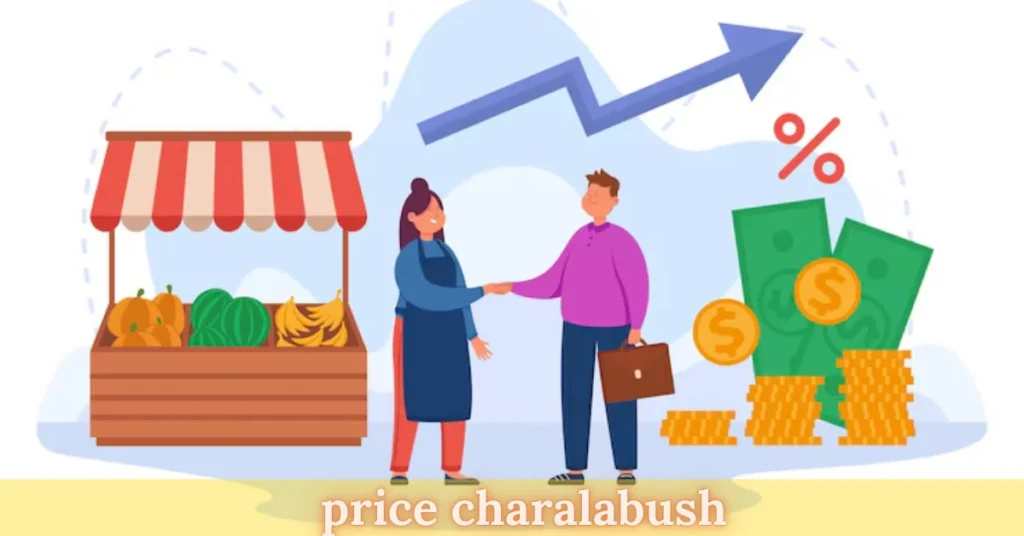Introduction
“Price charalabush” refers to the pattern of price fluctuations driven by shifting supply, demand, and seasonal factors. Whether you’re budgeting as a consumer or setting prices as a business, understanding these dynamics can save you money and boost profitability. In this article, we unpack the core forces behind price charalabush and offer actionable tips for navigating its ups and downs.
The Foundations of Price Charalabush
Supply and Demand Dynamics
At its core, price charalabush mirrors the law of supply and demand: when demand outpaces supply, prices rise; when supply exceeds demand, prices fall. For example, limited edition sneakers often sell out quickly at high markups, only to drop sharply once supply meets demand.
Market Competition
In highly competitive markets, companies may slash prices to win customers, causing temporary price charalabush. Conversely, monopolies can keep prices elevated, dampening fluctuations.
External Economic Factors
Inflation, currency swings, and geopolitical events can all trigger sudden price shifts. For instance, fuel costs often ripple through to food and transport prices, creating a cascade of charalabush effects.
Seasonality and Price Fluctuations
Agricultural & Perishable Goods
Fruits and vegetables peak during harvest, leading to lower prices, but spike in the off‑season due to limited supply itshifting.com.
Retail Cycles & Holiday Pricing
Black Friday and end‑of‑season sales illustrate controlled price charalabush, where retailers offer steep discounts to clear inventory.
Weather‑Driven Variations
Unexpected weather—like a late frost—can decimate crops, reducing supply and driving up prices for produce such as avocados or blueberries.
Consumer Strategies to Navigate Price Charalabush
Timing Purchases
Buy seasonal items off‑peak—like winter coats in spring—to capitalize on lower prices.
Research & Comparison Shopping
Use price‐tracking websites and browser extensions (e.g., Honey, CamelCamelCamel) to monitor price histories and snag the best deals.
Leveraging Discounts & Loyalty Programs
Sign up for retailer newsletters and loyalty cards to access exclusive sales and early‑bird discounts.
Business Implications
Dynamic Pricing Models
Companies like airlines and ride‑share apps adjust fares in real‑time based on demand forecasts, a direct application of price charalabush principles.
Transparent Pricing Policies
Clear communication about why prices change builds consumer trust, mitigating backlash during spikes.
Data‑Driven Decision Making
Analytics tools help businesses predict demand surges—e.g., using Google Trends to forecast holiday shopping patterns—and set optimal prices.
Case Studies
Seasonal Produce Markets
Farmers markets often exhibit stark price charalabush: berries may cost $3/box in summer but $8 in winter itshifting.com.
E‑commerce Flash Sales
Amazon’s Prime Day triggers massive short‑term price charalabush, with electronics prices plunging up to 50% for 48 hours.
Tools & Technologies
Price‑Tracking Apps
Apps like PriceBlink and Slickdeals aggregate deals across retailers to help consumers beat price charalabush OpenSea.
AI & Predictive Analytics
Retail giants employ machine learning to forecast demand spikes—e.g., leveraging IBM Watson for dynamic pricing in supermarkets.
Pros & Cons of Price Charalabush
- Pros:
- Enables demand forecasting (better inventory management) .
- Offers consumers savvy shoppers discounts if timed correctly.
- Cons:
- Can confuse or alienate consumers if changes are too drastic.
- Small businesses may struggle with rapid repricing technologies.
Future Trends in Pricing Dynamics
- Greater personalization: AI will tailor prices to individual shopping patterns.
- Blockchain transparency: Immutable logs could boost trust in dynamic pricing.
- Sustainability pricing: Eco‑friendly products may carry premium seasonally tied to green certifications.
Conclusion
Price charalabush—driven by supply, demand, competition, and seasonality—shapes virtually every market. By mastering its principles, consumers can time their purchases for savings, and businesses can leverage dynamic pricing for profitability. Whether you’re plucking fresh berries or booking a flight, understanding these cost curves empowers smarter decisions in an ever‑shifting economy.
FAQs
What exactly is price charalabush?
A term describing price volatility arising from supply‑demand shifts, seasonal factors, and competition.
How can I predict seasonal price changes?
Track historical price data via apps like CamelCamelCamel and watch for harvest/peak indicators.
Do dynamic pricing models always benefit businesses?
They boost revenues but require robust data infrastructure and can risk customer trust if poorly communicated.
Are there ethical concerns around price charalabushi?
Yes—price gouging during crises (e.g., after natural disasters) raises moral and legal issues.
What tools help monitor price charalabush?
Price‑tracking extensions (Honey), deal aggregators (Slickdeals), and AI‑powered analytics (IBM Watson) are key






